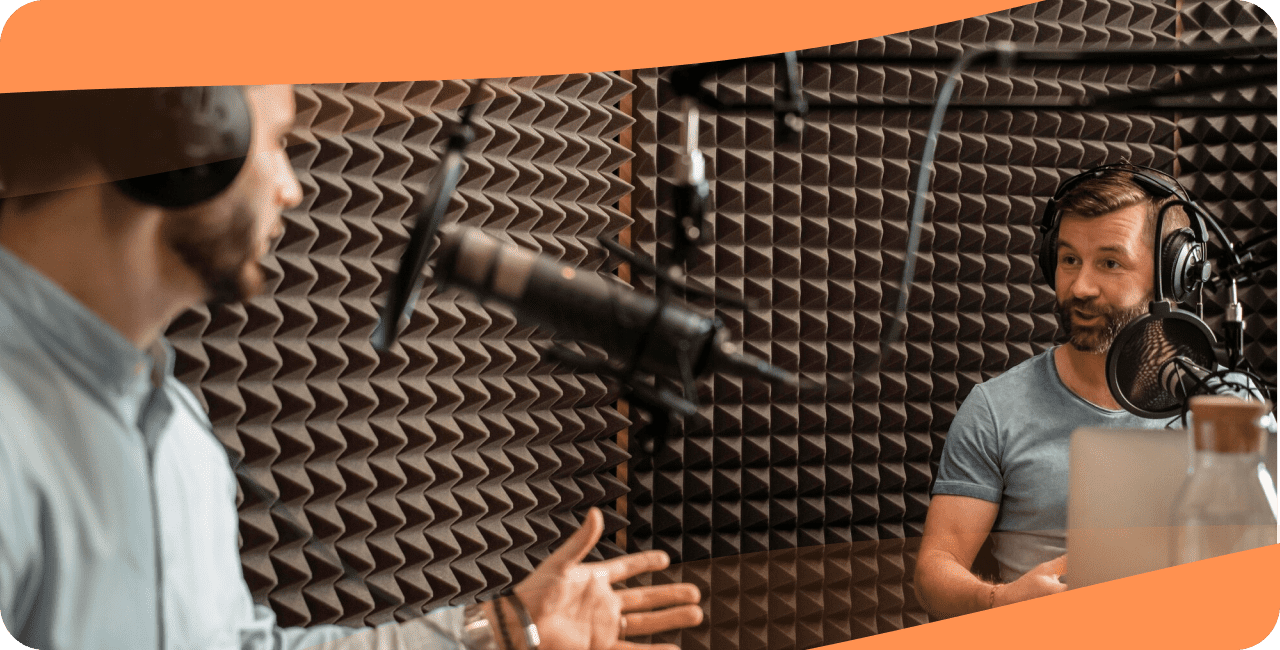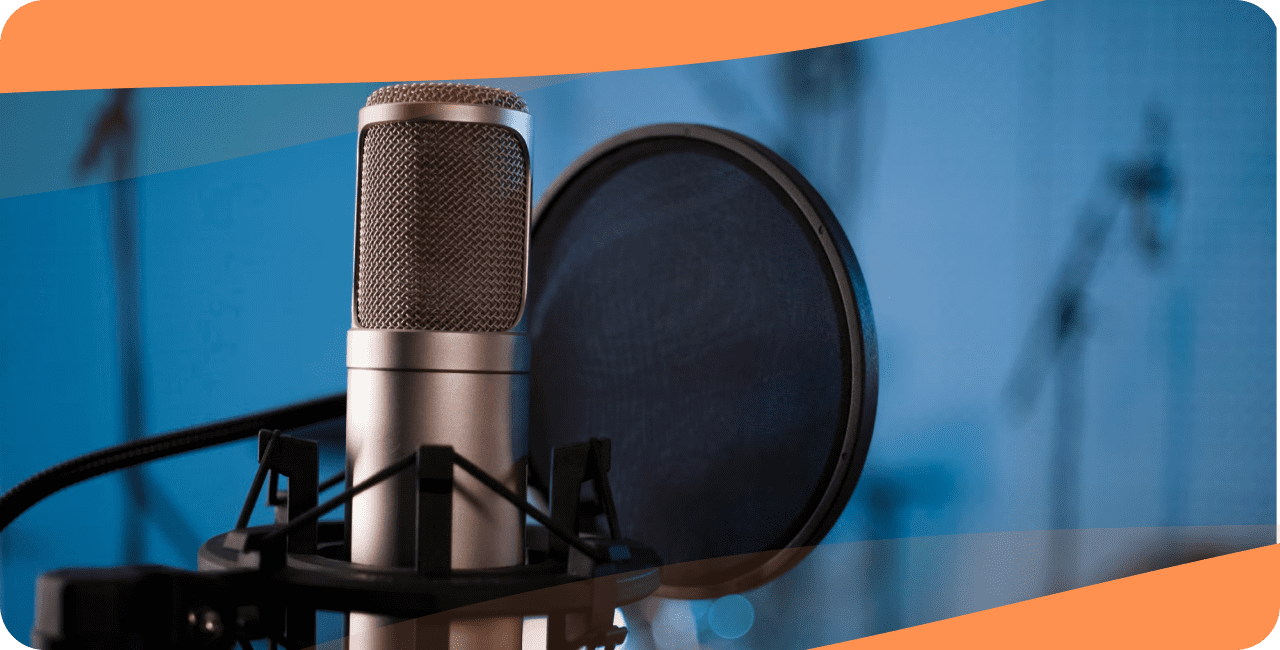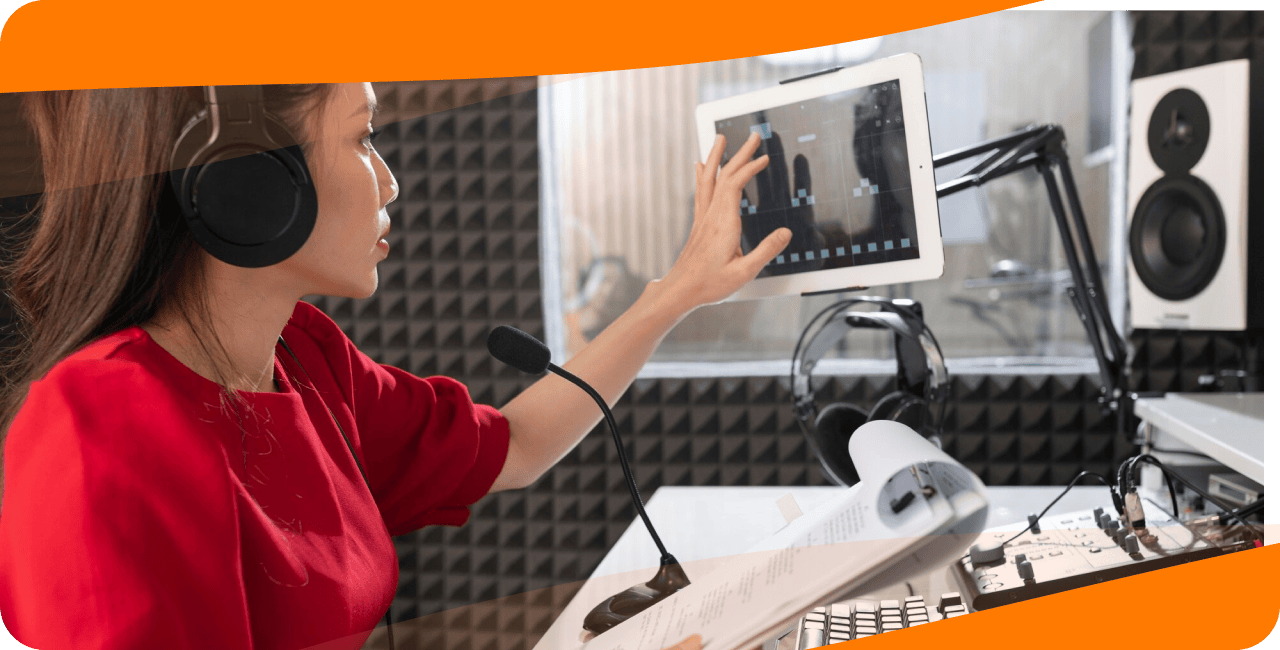Ever found yourself tapping along to the rhythm of your favorite tunes or getting absorbed in the latest talk shows and thought, “I could do this”? You’re not alone. Many of us have daydreamed about hosting our own radio show, sharing our unique takes on music, news, or whatever sparks our passion. This isn’t just wishful thinking; it’s a real possibility. At RadioKing, we’ve seen countless individuals transform from avid listeners to star hosts, and we’re here to guide you on that journey.
Starting your own radio show isn’t just about having a microphone and some catchy tunes. It’s about crafting a space where your voice can be heard, and your stories can unfold, whether you’re a fan of classic rock, a sports enthusiast, or someone who’s got their finger on the pulse of the latest financial news. With the right approach, your show could be the next big thing on the airwaves, joining the ranks of influential platforms like NPR or Bloomberg.
In this guide, we’ll walk you through every step of creating a radio show that resonates. From pinpointing that brilliant idea that sets you apart to choosing the perfect equipment and navigating the digital landscape, we’ve got you covered. So, if you’re ready to turn your radio dreams into reality, let’s get started.
1/ Finding Your Niche in Radio Broadcasting
2/ Structuring Your Radio Show
3/ Essential Equipment for a Radio Show
4/ Broadcasting Your Radio Show
5/ Optimizing Your Setup for Broadcast
6/ Professionalizing Your Radio Presence
7/ Choose the right host for your radio station
8/ Conclusion

1/ Finding Your Niche in Radio Broadcasting
Embarking on the journey of starting a radio show is thrilling, yet it comes with its set of challenges. The airwaves and digital platforms are bustling with diverse content. So, how do you carve out your own space? The key lies in finding your niche, that sweet spot where your interests meet your audience’s desires.
Leveraging Passions and Interests
Imagine tuning into a show where the host’s enthusiasm for the topic is palpable, where each episode feels like a deep dive into a world you never want to leave. This is what happens when hosts leverage their passions. Whether it’s the intricate world of indie music, the adrenaline rush of live sports, or the nuanced discussions of business and financial trends akin to Bloomberg’s insightful analyses, your passion is your show’s heartbeat.
Consider these points:
- What topics can you talk about for hours without losing interest?
- Are there underserved communities within your areas of interest?
- How can your unique perspective on common topics create a fresh listening experience?
Understanding Your Audience’s Preferences
Knowing your audience is as crucial as knowing your content. Your show might be about jazz music, but are your listeners seasoned aficionados or newbies looking for an introduction? This understanding shapes everything from your language to the depth of your content.
Here’s how to align with your audience:
- Research: Use tools and surveys to gauge the interests of potential listeners. Platforms like NPR often share listener demographics and interests, which can offer valuable insights.
- Engage: Interact with your audience through social media, forums, and feedback channels. What are they talking about? What do they want more of?
- Adapt: Be willing to tweak your content based on listener feedback. The most successful shows evolve with their audience.
By marrying your passion with a deep understanding of your listeners’ preferences, you’re not just starting a radio show; you’re creating a community. A community that tunes in every week, not just for the content, but for the shared experience and the connection they feel with you, the host. Whether it’s the lively banter of a morning show or the in-depth analysis of a business podcast, the best shows reflect the perfect blend of host enthusiasm and listener engagement.

2/ Structuring Your Radio Show
Once you’ve zeroed in on your niche, the next step is to bring structure to your vision. A well-structured show not only captivates your audience but also keeps you, the host, on track. Let’s break down how you can transform your ideas into a compelling radio show.
From Ideas to Execution: Crafting a Script
A script serves as your roadmap, guiding you through each segment of your show. However, remember, a script for radio is not a rigid set of lines to follow verbatim but a flexible framework that allows for spontaneity and natural flow.
Here are some tips for scripting:
- Outline Key Points: Identify the main topics for each segment. This ensures you cover all intended areas without veering off course.
- Incorporate Listener Interactions: Plan for call-ins, shoutouts, or social media mentions to make your show interactive and dynamic.
- Timing is Key: Allocate specific times for each segment to keep your show well-paced and engaging.
Think of your script as a jazz composition. There’s a structure, but improvisation within that structure is what brings the magic.
Keeping the Energy Up with Dynamic Presentation
The vitality of your show hinges on how you present your content. Energy, tone, and pacing all contribute to keeping your listeners hooked.
To maintain high energy levels:
- Vary Your Tone: Just like in a captivating story, your voice should reflect the emotions and significance of what you’re discussing. Excitement, curiosity, concern – let your voice convey it all.
- Use Music and Sound Effects Wisely: Background music and sound effects can enhance the mood and underscore important points, but use them judiciously to avoid overwhelming your content.
- Engage with Your Co-hosts and Guests: If your show format includes others, make the most of these dynamics. The interplay of different perspectives and personalities can add depth and interest to your show.
Remember, your goal is to create a show that your listeners look forward to, a show that feels like a friend they can’t wait to catch up with. Whether it’s the latest hits in pop music, insightful discussions on current news, or deep dives into niche hobbies, your presentation can make all the difference.

3/ Essential Equipment for a Radio Show
Creating a radio show that resonates with your audience goes beyond just content; it’s also about delivering crystal-clear audio that makes your listeners feel as though you’re right there with them. Let’s dive into the technical setup that will bring your radio show to life.
Choosing the Right Microphone
Your microphone is your gateway to your listeners. It can make or break the audio quality of your show. With a plethora of options available, it’s crucial to select a microphone that suits your specific needs and environment.
Consider these factors:
- Type of Microphone: Condenser microphones are known for their sensitivity and detail, perfect for controlled studio environments. Dynamic microphones, on the other hand, are more rugged and better suited for live, on-the-go recordings.
- Connectivity: USB microphones offer plug-and-play convenience and are ideal for beginners, while XLR microphones provide professional-level quality and require an audio interface.
- Pickup Patterns: Choose a cardioid microphone to capture sound primarily from the front, minimizing background noise—ideal for solo podcasts or radio shows.
Rest assured, it doesn’t need to be expensive and have a thousand connections to work properly. You’ll also be able to find good microphones to connect to your computer via USB. However, if you prefer to opt for high-end equipment, you can find our XLR microphone recommendations.
Software Solutions for Live Broadcasting and Recording
Once you’ve got your microphone sorted, the next step is choosing the right software to bring your show to the digital realm. Whether you’re live streaming or pre-recording episodes, the right software can enhance your show’s quality and simplify the production process.
Key considerations include:
- Ease of Use: Look for intuitive interfaces that you can navigate comfortably. Time spent struggling with complex software is time away from creating great content.
- Features: From basic recording to advanced editing, effects, and live streaming capabilities, choose software that aligns with your show’s format and your technical expertise.
- Compatibility: Ensure the software is compatible with your operating system and other equipment. Also, consider software that allows integration with popular streaming platforms and social media for broader reach.
Software like Audacity for recording and editing, OBS Studio for live streaming, or RadioKing’s own broadcasting solutions are great starting points. They cater to various levels of expertise and can adapt to the evolving needs of your radio show.
With the right microphone in hand and the best software at your fingertips, you’re well on your way to producing a radio show that not only sounds professional but also deeply engages your listeners, whether they’re tuning in for the latest news, sports updates, or just some good old-fashioned talk radio.

4/ Broadcasting Your Radio Show
The moment has arrived to bring your radio show to the airwaves. This pivotal step involves deciding whether to collaborate with an existing station or to embark on the adventurous path of starting your own. Each option has its unique set of advantages and considerations.
Joining an Existing Station vs. Starting Your Own
Joining an Existing Station: Collaborating with an established radio station can offer a solid platform for your show. You benefit from the station’s existing audience, technical infrastructure, and promotional channels. This can be a great way to gain immediate visibility and credibility.
- Pros: Access to an established audience, technical support, and promotional assistance.
- Cons: Potential creative constraints and adherence to the station’s schedule and guidelines.
Starting Your Own Radio Station: If you crave full creative control and the flexibility to set your own rules, starting your own station could be the way to go. This option allows you to curate content, choose your broadcast times, and grow your brand from the ground up.
- Pros: Complete creative freedom, ability to set your own schedule, and opportunity to build a personal brand.
- Cons: Requires more initial effort in setup, promotion, and building an audience.
Live vs. Scheduled Broadcasting: Finding Your Style
Live Broadcasting: Going live adds an element of spontaneity and interaction to your show. It allows for real-time engagement with your audience through call-ins, live chats, and instant feedback. The thrill of live broadcasting can add an unparalleled dynamic to your show, but it also demands quick thinking and adaptability.
- Pros: Real-time interaction, spontaneity, and the excitement of the “anything can happen” factor.
- Cons: Higher pressure, potential for technical issues or mistakes, and the need for a more rigid schedule.
Scheduled (Pre-recorded) Broadcasting: Pre-recording your shows gives you the luxury of editing, which means you can polish your content, add effects, and ensure a seamless listening experience. It’s a great option if you prefer to have more control over the final output and need flexibility in recording times.
- Pros: Ability to edit and refine content, flexibility in recording times, and reduced pressure during recording.
- Cons: Less interaction with the audience in real-time and the need for additional time for post-production.
Whether you decide to align with an existing station or chart your own course, and whether you choose the exhilarating spontaneity of live broadcasting or the polished precision of scheduled shows, remember that your unique voice and content are what will truly make your radio show stand out. With passion, preparation, and the right choices in broadcasting, you’re all set to make waves in the world of radio.

5/ Optimizing Your Setup for Broadcast
The quality of your broadcast isn’t just about the content you deliver; it’s also heavily influenced by the technical robustness of your setup. Ensuring a reliable internet connection and choosing the right hosting service are foundational to your show’s success.
Ensuring a Reliable Internet Connection
In the world of radio broadcasting, a stable internet connection is your lifeline. It’s the bridge between your content and your listeners, ensuring that your show streams smoothly, without frustrating interruptions or quality dips.
- Wired Connection: Whenever possible, opt for a wired connection over Wi-Fi. Ethernet connections tend to be more stable and offer faster speeds, reducing the risk of unexpected dropouts during live broadcasts or uploads.
- Speed Test: Regularly perform internet speed tests to monitor your upload and download speeds. For broadcasting, a consistent upload speed is critical, ideally above 5 Mbps for high-quality audio streaming.
- Backup Plan: Always have a contingency plan. Whether it’s a backup internet provider, broadcasting a radio show via your mobile, or a pre-recorded show ready to air, being prepared for internet issues can save the day.
Selecting a Hosting Service for Your Radio Station
Your choice of hosting service can significantly impact your show’s accessibility and quality. A reliable hosting service not only ensures your radio station is accessible to listeners around the clock but also offers tools to manage and schedule your content effectively.
- Uptime Guarantees: Look for a hosting service that offers high uptime guarantees. Your station needs to be live 24/7, and every moment of downtime can mean lost listeners.
- Bandwidth and Storage: Ensure the service provides ample bandwidth and storage for your needs. High-quality audio files can be large, and you’ll want enough bandwidth to support multiple simultaneous listeners.
- User Interface and Support: A user-friendly interface for managing your broadcasts and prompt customer support are invaluable, especially when you’re troubleshooting issues or learning the ropes.
By solidifying your internet connection and carefully selecting a hosting service tailored to the needs of radio broadcasters, you lay a strong foundation for a professional and reliable radio show. These technical aspects, though behind the scenes, play a pivotal role in ensuring your show reaches your audience as intended, every time. With this setup, you’re not just ready to broadcast; you’re set to captivate and grow your listener base.

6/ Professionalizing Your Radio Presence
Effective Promotion of Your Radio Show
Promotion is key to expanding your reach and attracting a larger audience. In today’s digital age, there are numerous channels through which you can promote your radio show, each offering unique benefits.
- Social Media: Platforms like Twitter, Instagram, and Facebook are perfect for sharing snippets of your show, engaging with your audience, and announcing upcoming episodes or guest appearances.
- Email Newsletters: Keep your most loyal listeners in the loop with regular email updates. Share behind-the-scenes content, exclusive previews, or interesting anecdotes to build a closer relationship with your audience.
- Collaborations: Partnering with other radio hosts, podcasters, or influencers in your niche can introduce your show to new audiences. Collaborative episodes or shoutouts can be mutually beneficial.
Remember, consistency is key in promotion. Regular updates and engagements can keep your audience hooked and looking forward to more.
Building a Visual Identity and Online Presence
In a predominantly auditory medium, a strong visual identity can make your radio show stand out and become more memorable. This includes everything from your logo and promotional materials to your website design.
- Logo and Branding: Your logo should reflect the essence of your radio show. It’s what listeners will associate with your content, so make sure it’s catchy, relevant, and professional.
- Website: A dedicated website for your radio show not only adds credibility but also serves as a central hub for everything related to your show, from episode archives and show notes to blogs and listener forums.
- SEO: Optimize your online content with relevant keywords to improve your visibility in search engine results. This can help new listeners discover your show when searching for related topics.
A cohesive visual identity and strong online presence can significantly enhance your show’s professionalism and appeal, making it more attractive to potential listeners and sponsors.
Enriching Content with Guest Speakers
Inviting guest speakers to your show can add a fresh perspective and keep your content dynamic. Guests can offer expertise in specific areas, share unique experiences, or simply provide a new voice to engage with.
- Diverse Perspectives: Guests from various backgrounds can introduce your audience to new ideas and cultures, enriching their listening experience.
- Networking: Building relationships with guests can also expand your professional network, opening doors to more opportunities and collaborations.
- Listener Engagement: Announcing guest speakers in advance can generate buzz around your episodes, encouraging more listeners to tune in live or download the episodes.
Incorporating guest speakers into your radio show not only diversifies your content but also enhances its value, making each episode an opportunity for listeners to learn something new or hear a different side of a story.
By focusing on these key areas, you can elevate your radio show, transforming it into a professional and polished broadcast that captivates and grows your audience.

7/ Choose the Right Host For Your Radio Station
Downloading live broadcast/recording software is a good first step. However, in order to share your content with your listeners, you will need a radio server.
With our Radio offers, you’ll have access to our Radio Manager to easily schedule your shows and music in just a few clicks. This radio server can also be configured with your live broadcasting software to broadcast your live radio show whenever you want or need to.
Conclusion
Diving into radio show creation is a thrilling endeavor that marries your unique perspective with listeners’ diverse interests. Every step, from conceptualization to broadcast, shapes your path in the vibrant world of radio. Stay true to your voice and engaged with your audience, and your show might just become their next favorite listen. Ready to make waves? Let’s broadcast your passion to the world.
You now have all the keys in hand to start a radio show and make it professional!
